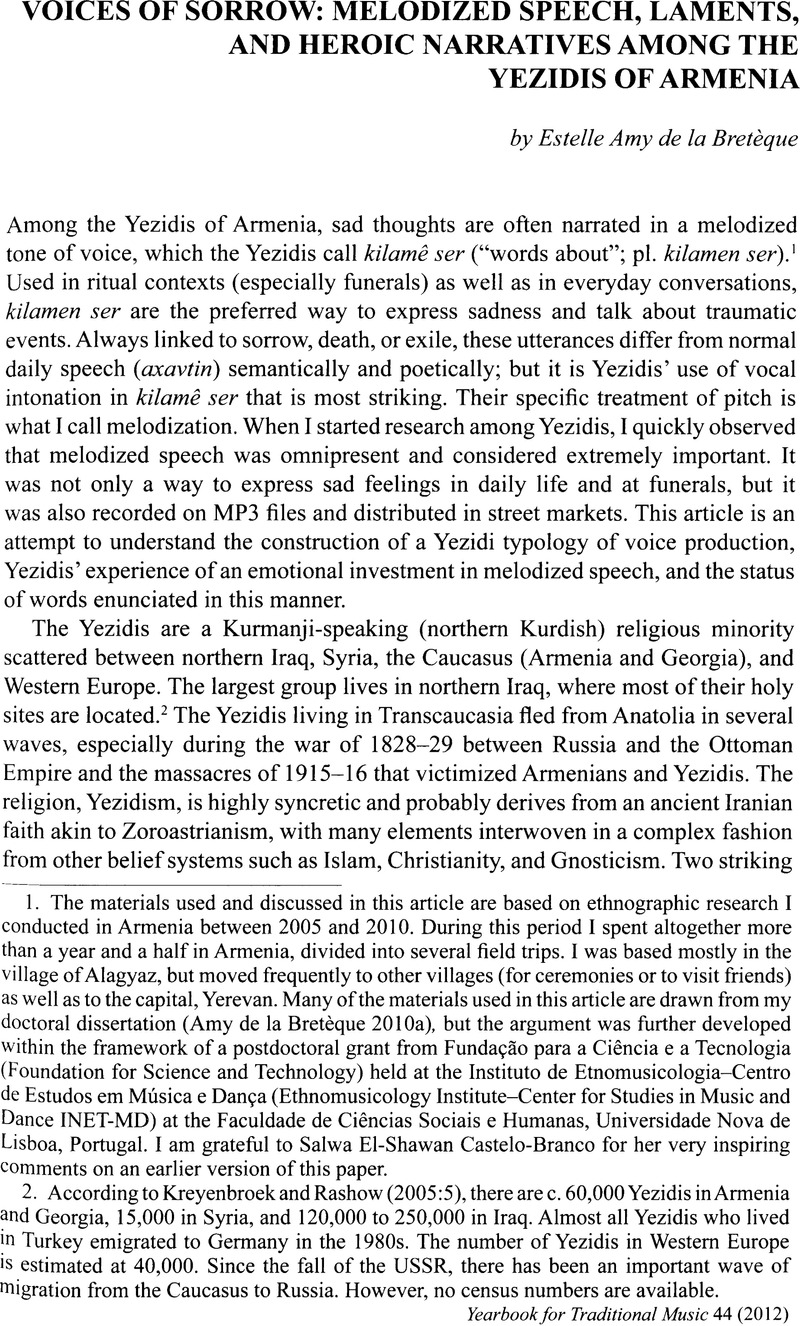Crossref Citations
This article has been cited by the following publications. This list is generated based on data provided by Crossref.
Nikolsky, Aleksey
2015.
Evolution of tonal organization in music mirrors symbolic representation of perceptual reality. Part-1: Prehistoric.
Frontiers in Psychology,
Vol. 6,
Issue. ,
De La Bretèque, Estelle Amy
Doval, Boris
Feugère, Lionel
and
Moreau-Gaudry, Louis
2017.
Liminal Utterances and Shapes of Sadness: Local and Acoustic Perspectives on Vocal Production among the Yezidis of Armenia.
Yearbook for Traditional Music,
Vol. 49,
Issue. ,
p.
129.
KATSANEVAKI, Athena
2017.
Modern Laments in Northwestern Greece, Their Importance in Social and Musical Life and the “Making” of Oral Tradition.
Musicologist,
Vol. 1,
Issue. 1,
p.
95.
Schäfers, Marlene
2018.
“It Used to Be Forbidden”.
Journal of Middle East Women's Studies,
Vol. 14,
Issue. 1,
p.
3.
Six-Hohenbalken, Maria
2019.
May I be a sacrifice for my grandchildren—transgenerational transmission and women’s narratives of the Yezidi ferman.
Dialectical Anthropology,
Vol. 43,
Issue. 2,
p.
161.
Schäfers, Marlene
2019.
Archived Voices, Acoustic Traces, and the Reverberations of Kurdish History in Modern Turkey.
Comparative Studies in Society and History,
Vol. 61,
Issue. 2,
p.
447.
Schäfers, Marlene
2020.
Walking a Fine Line.
Comparative Studies of South Asia, Africa and the Middle East,
Vol. 40,
Issue. 1,
p.
119.
Goswami, Manash Pratim
and
Kumar, A. Deivendra
2022.
Tamil Songs of Mourning: Understanding the Reflection of Times in Oppari Songs.
Journal of Religion and Health,
Vol. 61,
Issue. 6,
p.
4959.
Zou, P. Hoideiniang
and
Priscilla, B. Evangeline
2023.
Folklore: An identity born of shared grief.
Cogent Arts & Humanities,
Vol. 10,
Issue. 1,
Demir, Aylin
2023.
Gender and Genre: Women's Performance Practices in Dersim.
Journal of American Folklore,
Vol. 136,
Issue. 540,
p.
131.
Delikaya, Ömer
2024.
Navê Cihan, Mekanên Bîrê û Geliyê Zîlan di Çanda Dengbêjiyê de.
Mukaddime,
Vol. 15,
Issue. 1,
p.
15.





